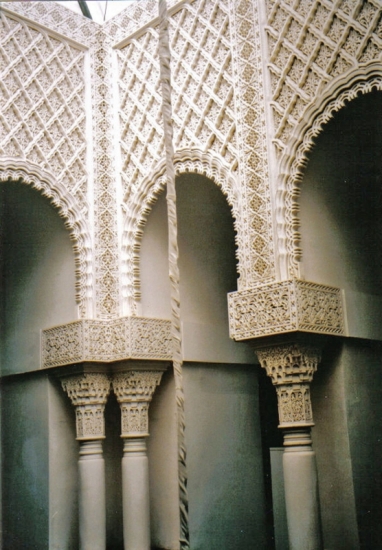
World Center for North African Jewish Heritage reopes in Jerusalem
After a long hiatus, a Jerusalem gem of a museum celebrating the rich and fascinating history, culture and architecture of North African Jewry reopened six months ago but still seems to be one of the best kept secrets in town.
The David Amar World Center for North African Jewish Heritage is tucked away behind a line of storefronts used by rent-a-car companies, sellers of Judaica and the Gesher Educational Center on King David Street, the businesses effectively hiding one of the first buildings to be constructed by Jews outside the Old City walls less than a five minute walk away.
“The Heritage Center is absolutely beautiful, simply breathtakingly stunning,” is how British-born Israeli tour guide Madeleine Lavine described the center after a recent visit to the corner of Morocco in the City of Gold.
Lavine, who worked for many years in public relations and as a guide for the historic YMCA in King David Street, was even more astounded by the fact that she had worked close by for a long period, but had known nothing of the gem hidden away from sight on what had effectively become one of the biggest building sites in the city.
Inside the building is a four-storey treasure trove in the form of a painstakingly reconstructed Moroccan palace featuring architectural motifs from Morocco and the Andalusia Alhambra Palace. Expert artisans in zellige – the mosaic floor and wall coverings – were brought from Morocco to Jerusalem to create the absolutely authentic atmosphere and surroundings of “back home” for them and that which hundreds of thousands of Jews left behind – but never forgot.
The neighborhood is the Machane Israel Quarter, also known as Mugrabim or Mamilla. The Heritage Center celebrates in a resplendent and ornate style, the extensive contributions over generations in the areas of religion, philosophy, literature and poetry of the North African Diaspora.
The center of the building has been transformed into a courtyard covered with a decorative glass dome. Dancing beams of sunlight piercing through the glass make the forecourt seem more magical than anything Harry Potter and Co. could conjure up, as talented as they are.
Huge elaborately carved cedar wood beams, imported from the Atlas Mountains, and great expanses of decorative stucco walls and arches leave one in awe - and with a stiff neck from looking up in order to absorb the true beauty of the intricate work of the artisans' Spanish-Moorish style.
Before the building closed for a decade, due to the surrounding area being turned into a massive building site and access to the Heritage Center cut off, a team of artists worked on the stuccos alone for over a year under the watchful and professional eye of Casablanca plaster expert, Muhammad Jalid. Where one would normally find quotations from the Koran in typical Moslem Moroccan or Andalusia structures, at the Heritage Center one finds extremely attractive and colorful floral and geometric motifs instead.
Leading off the central patio on all levels are spacious exhibition halls showing artworks and photographs with explicit texts detailing the period of history depicted. Apart from a library, the building is full of furniture, carpeting, vessels, clothing - everything and anything that could help conjure up a true picture of the richness of Jewish life in the Magreb for Ashkenazi outsiders. Not only that, but Magreb old-timers looking to catch the colors and smells of times gone by will get just that by the plenty in these luscious surroundings.
There’s also a music room, audiovisual center and on the fourth floor a recently completed synagogue renovation.
Originally the building served as a kollel for the Maaravim community, Moroccan Jews who were the first - in l865 - to venture outside the Old City to build their homes,
mainly because of poverty and dense overcrowding inside the Old City.
The greatest push toward the building of the neighborhood came from David Ben Shimon, who is also known as the ‘Tzuf D'vash”, a Hebrew acronym of his initials meaning “nectar of honey”. Arriving in Jerusalem in l854 from Rabat, Ben Shimon organized the Maaravim community and became their natural leader.
The neighborhood was built in three phases:. the first was from l864-1866, the second l891-1898, and the third l909-1910. Abandoned a number of times, some of the buildings were renovated in l933.
When a portion of the area was up for demolition in the late l950s, the Maaravim Community Committee was instrumental in getting that decision overturned, but it was a good few years before the area entered into renaissance.
The Gesher Center was constructed at the beginning of the 90s with some of the neighborhood homes preserved within the building and original stone archways in the forecourt. Other damaged homes were bought up by private individuals who restored them to their former glory, taking care to preserve the original architecture and their historic character.
At the official opening ceremony more than a decade ago, former President of Israel Yitzhak Navon, born in Jerusalem in 1921 to a Sephardi family, said that the Center would serve as a signpost for future generations because without a past they have no future. "This Center will not only serve as a museum, portraying images from the past, but will serve as a source of inspiration, a motivating and driving force, and this elegant building will be teeming with life to satisfy any inquisitive soul," said Navon.
He also spoke about his own family who had come to Israel because of an experience in l884 of Rabbi Yaakov Ben Atar, his maternal grandfather and rabbi of Azemmour in Morocco. "Elijah the Prophet came to him in his dreams and asked him how much longer he would sit in comfort when Jerusalem is in sorrow, and a few days later he took my grandmother Hanina and his small daughter Miriam, my future mother, and set out for Jerusalem."
In Jerusalem, Navon's grandfather founded a yeshiva called “Mishmeret Kehuna”, which Navon remembers well from his childhood. His mother's brother, Haim Ben Atar, was a talented journalist and writer, and another brother, Shimon, served as secretary of the Maaravim Community Committee for over 40 years.
"My grandfather set out on a mission to establish shelters for the poor in the Machane Israel neighborhood, and this is where we have established the International Heritage Center for North African Jewry.
"I feel to a certain degree I am closing a circle and opening a new one," said the former President of the State of Israel, grandson of a Moroccan rabbi who had followed his dream.
People who want to visit have to make up a group of minimum 10 people, and book in advance with Natalie at 02 623 5811. Guided tours are available in Hebrew, English and French.
Opening hours: Sunday - Thursday 8:00 - 15:00
email: merkazna@bezeqint.net
Address:13 Hamaaravim Street, Jerusalem
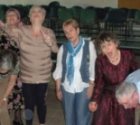 Let’s have a bit of Playback
Let’s have a bit of Playback-1372659501.jpg) Buying New Construction in Israel
Buying New Construction in Israel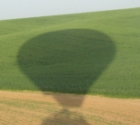 A lot of hot air - ballooning
A lot of hot air - ballooning Art from the Heart
Art from the Heart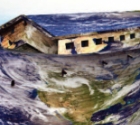 Jewish Art Returns to Jerusalem
Jewish Art Returns to Jerusalem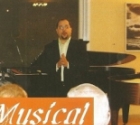 Musical Treats
Musical Treats Lydia Aisenberg
Lydia Aisenberg